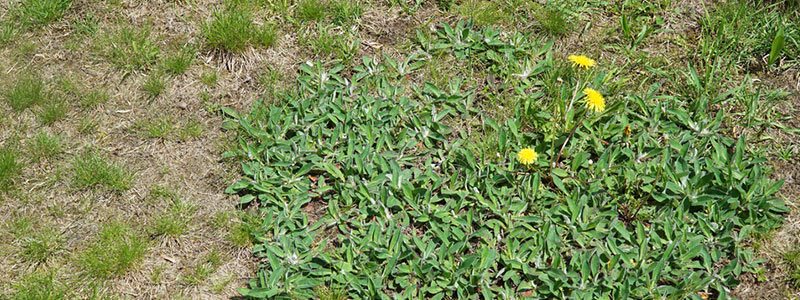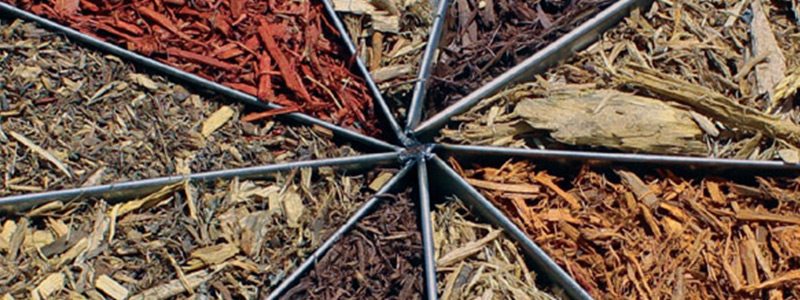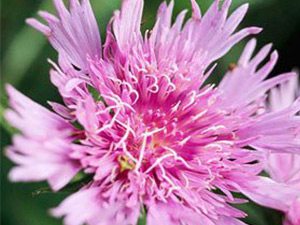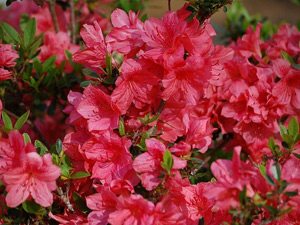
by Kenny Roedell | Jul 14, 2017
Welcome or Stay Away! What Does Your Front Yard Say?
Since Ancient Greece, the “portico” or front porch has always been a significant symbol of transition from a community outdoor and social space into the intimate indoor space of your home. It is an opportunity to create an image of elegance and warmth to welcome your guests and maybe encourage neighbors to do the same.
These front yard meeting and greeting spaces can set the vibe of your home and be welcoming or can run guests away quickly if awkward or unkempt front yards and entryways. This can be an overwhelming task at times here in Central Florida where summer heat is hot, humid and brutal with the sometimes challenging soil conditions and water restrictions. You may feel like your options are limited and why bother. But it’s not that hard!
5 Simple Florida Landscaping ideas or tips
to remember when designing your gorgeous welcoming area:
1) Create levels with different size pots to add depth and interest.
2) Design for visibility with a variety of color, texture, and form.
3) Direct view to front entry with focal plants.
4) Dress up driveways and always accent with lighting, stone or wood.
5) Get creative with larger spaces and create pathways to tucked away gardens and intimate areas.
Need Plant Ideas!
Most newly constructed home sites have very little shade while older homes may sometimes have an overabundance because of ancient old tree canopies. Here are some easy Florida landscaping ideas for the front of the house that allow you to embrace our Florida environment and keep your front areas warm, bright, colorful and tolerant of our hot Florida weather. Here are some examples.
For full sun areas, some examples of some great landscaping options are:
African Iris, Stokes Astor, Twin Flower Agave, Magnolia, Purple Love Grass and Pineapple Guava. These plants are sure to add some color and texture to your front space to provide impact and warm.
For shady areas try Azaleas, Bromeliads, Camellias, Ferns, and Gardenias.
Don’t forget my four favorites to add into the mix as well. You can find out what those are in my article Four Great Plants to Make Your Florida Landscape Design Beautiful. By The Way – as a shameless plug and as an Orlando landscape supply company, We carry many of these plants
For more general over all look ideas, check out this slideshow from HGTV.
Use these Florida Landscaping Ideas and combine them with your vision of what “Welcome” means to you, you can truly create your own design as a personal invitation into your home that will be complimented and remembered by all that visit year after year.

by Kenny Roedell | Jun 23, 2017
1) WEEDS
While grass and weeds can coexist to give you a nice green look, it is not usually the most pleasing appearance for a lawn. Typically weeds will grow faster and out of scale to the lawn. Many weeds also have a broadleaf look and can be a big reason why your lawn looks ugly! Healthy lawns generally take care of many weed problems by crowding them out. Weeds germinate at different times of the year and at different rates. The spring and early summer are when most of them start to grow. Weak grass or small areas of exposed soil are ideal spots for them to take hold and start attacking your lawn. Be sure to use a weed treatment early in the season. If your yard is overrun by weeds you can still save it by treating the weeds and fertilizing your grass. Make sure you have a healthy ph balance in your soil. This will help your sod grow healthy and strong and push the weeds out. You can get your soil tested for FREE at Leu Gardens in Orlando.
2) TOO MUCH SHADE
Although some are shade tolerant, most Florida grasses like and need the sun. Between your house or other structures and mature trees, your grass or sod may not actually be getting a full day sun. A full day of sun is more than 6 hours of direct sunlight. So that couple hours of sunshine you get under the tree in the morning when the sun is rising is probably not enough. While there are some grass varieties that handle some shade, they tend to be weaker, grow slower, less able to handle foot traffic and can allow weeds to take over if you’re not using a weed preventative. If the shade is an issue, make sure you have a shade tolerant grass or perhaps find a different type of ground cover for those areas. Mulch, rocks or gardens with plants, like jasmine, that stay beautiful with little requirement for light.
3) FOOT TRAFFIC
Even though some turfs are designed for play spaces and foot traffic more than others, the reality is that wet grass and primarily the soil does not tolerate foot traffic well. So on all those rainy Florida afternoons as people walk across your yard or your playing sports on it, the soil is getting compacted making roots difficult to grow. Aside from that, when the soil is soft, it is easier for individual blades of grass to be pulled out with wear and tear. If the grass is really dry, foot traffic can break blades that will turn brown and can stunt growth.
4) DOGS
We all love our canine companions, but they have to go out regardless of weather so there is no way to avoid them trampling out into the soft wet soil. Typically I see the worst destruction during the summer with Florida’s famous rainy season. Dogs generally follow a routine and their nails can wear a bald path into the soil on wet days quickly. Pattern behavior also has those spots were dogs like to do their business. Even on dry days dog urine is one of the worst stressors on your grass. It burns out the grass and eventually creates dead blank spots in the lawn.
5) LACK OF WATER
Besides sun, the other most important thing that grass needs to grow to be lush & green is WATER. While we all want to be conscious of the environment and not water their lawn every day, some supplemental water may be necessary at times. During those hot Florida days, water deprived areas, as well as new sod need additional water to survive. One of the most common water deprived, as well as sun-deprived areas are under trees. Trees not only absorb much of the water that reaches the ground, they block a good portion of the rain from even reaching the ground. This is a major contributor as to why grass naturally does not do well in those spaces, so if we are going to force something where it naturally does not do well, it will likely need some additional help, in this case in the form of water. Another thing to look at is water run-off. If your yard is on a slope the water maybe just running downhill faster than the soil can absorb it. If you want to know more about watering your landscape check out my article,”Don’t let the Summer Sizzle Kill Your Landscape”

by Kenny Roedell | Apr 27, 2017
Choose Your Hardscaping Materials
Hardscaping your yard not only adds value to your home, but just as importantly, it can help you create a year-round at-home retreat here in Central Florida. And deciding what to use in your hardscaping projects is one of the decisions you’ll need to make.
Read on to learn about some of the pros (and cons) of various materials.
(more…)

by Kenny Roedell | Apr 20, 2017
Many Florida residents already know the value of a sprinkler system, and if you’re not one of them, our sprinkler system FAQs can help educate you on commonly asked questions.
In our last post, we talked about common varieties of sprinkler systems. If you’re new to sprinkler systems, that article will provide an overview on the types of systems that are most commonly used. Next, I invite you to read about the most common questions I encounter when installing systems. If you can’t find the answer you’re looking for, feel free to contact me with additional questions, and I’ll try to help you.
Sprinkler System FAQs
1. How much will it cost?
This may be the most common question I get, and the answer, of course, depends on your property and its unique features. Sprinkler system installation price varies according to:
- the type and quality of system
- the size of your property (or the areas to be irrigated)
- your soil condition and slope, if you have any
- the number of zones I’ll need to install
It’s fair to say that prices start at around $2,000-$2,500. The average installed price is probably about $3,000-4,500. You really need to start off by getting an estimate. And when you do, make sure that you find out the name of the manufacturer of the system so that you are comparing apples to apples.
2. What’s a sprinkler system comprised of?
A sprinkler system consists of:
- piping to deliver the water
- heads to distribute the water
- valves that allow the water through the pipes
- a controller that activates each part of the system at specific times
3. How long does a system installation take?
Usually, it takes 1-2 days to install a typical sprinkler system.
4. How do you determine the number of zones needed for a sprinkler system?
Zones are simply the areas that require more or less watering or the areas that require watering at particular times. Zones can include:
- Extremely shady grass areas
- Sunny grass areas
- Shrubs
- Gardens
5. Is maintaining a sprinkler system hard?
Sprinkler system maintenance isn’t hard if you know what you’re doing. We’re happy to walk you through your maintenance steps or we can come out pre- and post-season to handle the maintenance for you. The City of Tampa has a great half-hour video on maintenance here. To winterize, we recommend having your system “blown out,” which removes water from the lines.
6. Will I save money by installing a system?
You can save up to 50 percent on your water bill if you’ve been irrigating by hand. Your savings will just depend on how frequently you water now and how effectively. You can save up to 100 percent of your time, too!
7. Is DIY installation recommended?
If you’re installing something simple, like a soaker hose, then, by all means, do that yourself! Installation of an underground system requires knowledge of plumbing and electrical. You’ll also need to figure out how much water you’ll need to apply to each zone and when. Doing it yourself can save you about half of what it would cost to have the system installed, with the caveat that you’ll need to figure out how to adjust your settings for maximum effectiveness.
8. As far as professional installation is concerned, what is the licensing requirement in the state of Florida?
Florida offers irrigation contractors a voluntary license that exempts the licensed contractor from local irrigation contracting licenses. Upon passage of the state test, and payment of a fee to the state, the individual receives the voluntary license.
If you’d like an estimate, feel free to contact us here.

by Kenny Roedell | Apr 14, 2017
Improve Your Lawn & Gardens with Sprinkler Systems
If you want to enjoy a lush landscape throughout the growing season, sprinkler systems may be just the thing for you. Lawn and garden irrigation, one way or another, is an essential part of caring for your landscape, and sprinkler systems make it just that much easier — especially here in Florida.
Regardless of whether you’re plotting out a new landscape for your home or are looking for easier, more cost-efficient ways to care for your existing landscape, understanding the kinds of sprinkler systems that are available and how they differ can help you choose the best option for your situation.
In this post, we’ll touch on the three common kinds of sprinkler systems and their unique features.
Rotor Systems
Rotor-type sprinklers apply water by use of a rotating head (and are identified by their moving streams of water). More than likely you’ve seen one of these kinds of sprinkler systems in action – and you can pick out one of the older varieties by its sound alone (think “chooka-chooka-chooka-tic-tic-tic-tic”).
Rotor systems typically cover an area of 10-40 feet and are placed about 20-50 feet apart or so, depending on the type. Their bodies can be either of the shrub or pop-up style. Pop-up heads help prevent accidental trips and falls — and because they’re underground unless they’re being used, they also prevent accidental damage from lawn equipment.

Rotor Sprinkler
With pop-up heads, be aware that different pop-up head heights are available for different applications (your grass variety, shrub type or groundcover applications can require different heights). These heights can vary from 3″ to 12.”
Shrub-style heads are mounted above ground (up to 3′ or so) and are positioned to spray water over taller, denser shrubs.
Spray Head Sprinkler Systems
Spray head sprinkler systems distribute their water in a pattern, typically a circle. Because the pattern is constant (unlike with the rotor system), this kind of irrigation system has a high application rate. Due to this application rate, spray head systems are best for more absorbent, flatter grounds where run-off is less of an issue.

Spray Head Sprinkler
Like rotor systems, spray head systems can be installed with pop-up heads or freestanding heads.
Drip Watering Systems
Drip systems tend to make the best use of water, as they apply water directly to the soil or subsurface root zone, which reduces evaporation. Drip watering systems consist of hoses or tubing with small holes so that water slowly “drips” or sweats out – hence the name. This is the oldest method of irrigation, having gotten its roots in ancient China, where clay pots filled with water were buried underground. Drip watering systems can be as simple as a soaker hose setup laid out around your garden or buried under your garden’s mulch. For a more complex setup, you can add timers and risers.

Lowes has some good information on drip systems and a video on installation here.
We’re also proponents of using rain barrels for drip irrigation, when possible. Rain barrels can:
- supply water for your drip irrigation system
- help manage standing water or drainage issues in your yard
- save you money while helping to conserve natural resources
That’s a triple win!
Why Irrigate?
Simple: Irrigation maintains healthy landscapes and conserves water, if done correctly.
We here at Roedell’s Landscaping design irrigations systems specific to your landscape needs. These custom-designed systems use the latest technology to maintain an optimal water supply to your landscapes and gardens and provide:
- Intelligent water usage designed to save money
- Improved health and sustainability in and for your landscape
- Protection for your investment
If you’d like an estimate, feel free to contact us here.

by Kenny Roedell | Mar 7, 2017
It’s that time of year to spruce up your yard and that includes refreshing or laying down new mulch. We often get a lot of questions about the right type of mulch to use and the right way to use it. We also see people damaging or hindering the growth of plants by mulching incorrectly. I created this handy infographic to cover the basics of what you need to know about mulching. (more…)















